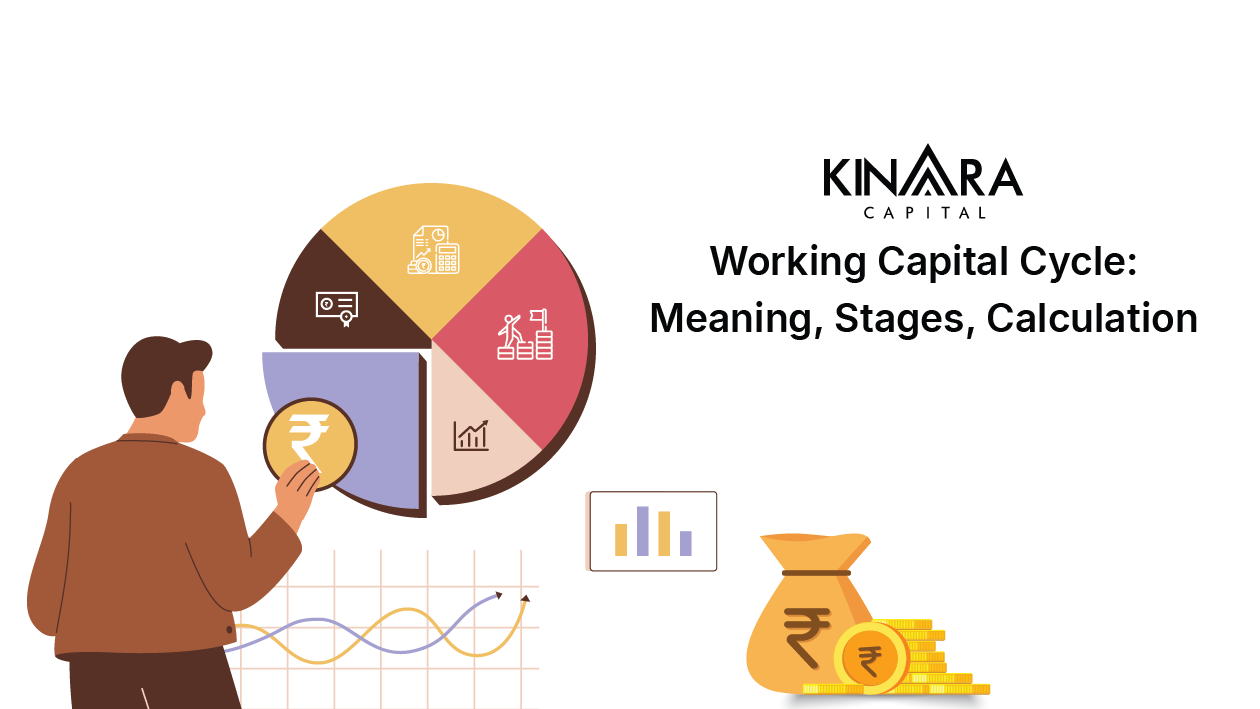
The working capital cycle refers to the time it takes for a business to convert its investments in inventory and other resources into cash. It involves the management of current assets and liabilities, including inventory, accounts receivable, and payable. A shorter cycle means faster cash flow, which is crucial for maintaining smooth operations. Understanding the working capital and operating cycle helps businesses ensure they have enough liquidity to meet daily expenses, repay debts, and reinvest in growth. Efficiently managing this cycle is key to sustaining profitability and long-term financial health.
The working capital cycle refers to the process of converting a company’s resources into cash through operations. It tracks how quickly inventory is sold and accounts receivable are collected, minus the time taken to pay suppliers. Understanding what the working capital cycle is and its importance helps businesses maintain smooth cash flow. The definition of working capital cycle emphasizes efficient resource management to support daily operations.
The working capital cycle, also known as the operating cycle for working capital, refers to the time it takes for a business to convert its current assets into cash. Here are the key steps involved in the working capital life cycle:
By monitoring and optimizing each step, businesses can shorten their operating cycle, improving liquidity and financial health
The working capital cycle measures how efficiently a business manages its short-term assets and liabilities. To calculate working capital cycle, use this formula:
Working Capital Cycle=Inventory Days + Receivables Days – Payables Days.
The working capital cycle days formula helps determine how long cash is tied up in operations before being collected. For example, if inventory takes 50 days to sell, receivables take 30 days to collect, and payables are due in 40 days, the working capital cycle calculation example would be 50 + 30 – 40 = 40 days. This means cash is tied up for 40 days.
A positive working capital cycle occurs when a business takes longer to collect cash from its receivables than it takes to pay its suppliers. In this case, the company has its cash tied up in inventory and accounts receivable for an extended period before it can use those funds for other purposes. The longer this cycle, the greater the need for external financing to cover operational costs. This type of working capital cycle typically indicates that the business needs more liquidity, as cash is not readily available until the receivables are collected. The operating cycle for working capital is extended, increasing the reliance on external funding sources, like loans, to maintain day-to-day operations.
On the other hand, a negative working capital cycle happens when a company receives payment from customers faster than it needs to pay its suppliers. In this scenario, the business collects cash before it’s required to settle its debts, giving it an advantage in cash flow management. This efficient cycle allows companies to reinvest in growth, reduce interest expenses, or take advantage of discounts from suppliers by paying early. A negative cycle can shorten the operating cycle for working capital, reducing the need for external financing and improving liquidity.
In essence, while a positive working capital cycle ties up funds for longer, a negative working capital cycle accelerates cash flow, enhancing financial flexibility. Understanding these cycles is crucial for optimizing the working capital and ensuring smooth business operations.
The working capital cycle is crucial for managing the flow of funds in a business. It represents the time taken to convert net current assets and liabilities into cash. Working capital importance lies in ensuring smooth day-to-day operations, maintaining liquidity, and covering short-term debts. Proper working capital management helps businesses avoid cash flow issues, ensuring operational efficiency and profitability. By focusing on the importance of working capital, businesses can ensure timely payments, reduce borrowing costs, improve customer satisfaction, seize growth opportunities, and enhance overall financial health. Efficient management directly impacts a company’s stability and potential for long-term success.
The working capital cycle plays a vital role in financial analysis by assessing the efficiency of a company’s cash flow management. It measures the time taken to convert current assets and liabilities into cash, indicating how well a company manages its short-term resources.
Understanding the working capital and operating cycle helps analysts evaluate a company’s liquidity, operational efficiency, and financial health.
A shorter cycle often signifies efficient management of inventory, receivables, and payables, which can enhance profitability and reduce financial risks. Effective analysis of this cycle is crucial for forecasting cash flow needs and making informed investment decisions.
Improving the working capital cycle involves optimizing cash flow and resource management. Key strategies include speeding up accounts receivable by offering discounts for early payments and tightening credit terms. Efficient inventory management can reduce holding costs and free up cash. Extending accounts payable terms without straining supplier relationships also helps retain cash longer.
Additionally, streamlining operational processes can minimize cash tied up in daily operations. Understanding how to increase working capital through these methods helps businesses enhance liquidity and financial flexibility. Implementing these ways to increase working capital can lead to better cash flow and improved overall financial health.
In conclusion, a well-managed working capital cycle is crucial for maintaining a healthy financial position and ensuring smooth business operations. By implementing effective strategies such as optimizing accounts receivable, managing inventory efficiently, and extending payment terms, businesses can enhance liquidity and operational efficiency.
Understanding the importance of working capital loans and the impact it has on MSMEs, Kinara Capital offers working capital loans to help these businesses manage their short-term financial needs effectively. These loans provide the necessary funds to cover operational expenses, improve cash flow, and support business growth, ensuring that small businesses can thrive and maintain financial stability.
Inventory management plays a critical role in the working capital cycle by optimizing stock levels to minimize holding costs and avoid excess inventory. Effective management improves cash flow by reducing the time capital is tied up in unsold goods.
Payment terms with suppliers impact the working capital cycle by influencing cash outflows. Extended payment terms allow a business to hold onto cash longer, improving liquidity and easing financial pressure. Conversely, shorter terms may require quicker cash outflows, affecting overall working capital management.
Working capital is the difference between current assets and current liabilities, reflecting a company’s short-term financial health. The working capital cycle measures the time taken to convert current assets and liabilities into cash, indicating operational efficiency and cash flow management.
Yes, seasonal fluctuations can affect the working capital cycle by altering inventory levels and sales volume. Businesses may need to adjust their cash flow and inventory management strategies to accommodate these variations and maintain liquidity.
Common mistakes businesses make with their working capital cycle include overestimating cash flow needs, mismanaging inventory levels, extending excessive credit to customers, and delaying payments to suppliers. These errors can lead to liquidity issues and disrupt financial stability and operational efficiency.
